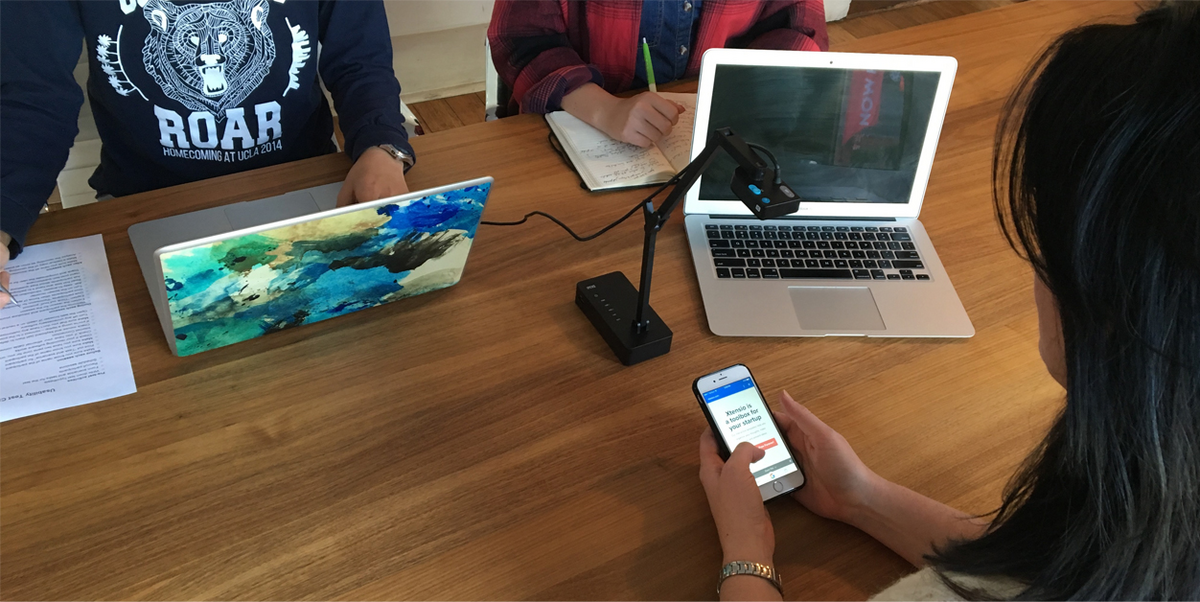Let’s be real. Launching a research project is no small feat. You need patience, you need time, and you can expect a lot of hard work. Not to mention how difficult it can be to wrangle your stakeholders on board. However, when you get buy-in from stakeholders, not only does it make your project leagues easier to execute, but it also makes it more likely to result in a successful outcome.
A great way to help you increase engagement with your stakeholders and foster an environment that’s actually conducive to completing research goals is to start as you mean to go on and build a culture of experimentation in your organization.
Experimenting with different approaches and perspectives throughout your processes offers built-in opportunities for others to get invested in the success of any project, well beyond those boring formal documents used to describe aims and give progress reports.
Why is that important? Because passionate people make cool stuff happen.
So What Does Investing in Research Actually Mean?
The process of building a culture of experimentation and investing in research refers to the commitment your company makes to innovation and sound decision-making by using scientific methods and data-driven insights.
That could mean:
- Engaging in user research studies to fully understand your customers’ behaviors, pain points, and needs.
- Using something like A/B testing on function and design options to figure out what performs best.
- Monitoring and analyzing data on a continuous basis, to inform your marketing and product development strategies.
- Giving your team encouragement and permission to propose new ideas and test them out.
It’s truly a mindset thing. It implies an organizational mindset, one where you fully embrace and encourage experimentation and data-driven decision making.
The goal? Continuous and ever-evolving improvement.
This type of culture allows you to iterate quickly, to fail fast and fail forward. You can test and learn from your own hypothesis, and make decisions informed by hard data. Not to mention it inspires innovation and sets you up to be more adaptable to change, so you can reap rewards over the long term.
What’s the Upside for Brands Who Successfully Invest in Research and Testing?
Quite a few, actually.
- Increased customer satisfaction: Since user testing and research can help you understand pain points and needs, you’ll produce better experiences and more user-friendly products.
- Increased sales and money: Sales 101, friends. Know your customers. When you know and understand their needs and preferences, that data can inform your products and marketing, so both resonate better and lead to more sales.
- You stay competitive: Using these types of insights to drive your decision-making helps your business stay one step ahead of similar businesses.
- Your product development is less costly: By experimenting and testing, you can suss out problems that need fixing early on, which ultimately saves you time and money. Fixing problems later almost always costs you more!
- High team engagement: If you involve your team and stakeholders in research and experimentation, you’ll be creating an innovation-minded culture that’s hard to beat. Your team will feel a sense of investment and ownership, ultimately leading to more motivation and satisfaction for everyone, all across the board.
Who are the Most Common Stakeholders You’ll Find Making Decisions for an E-commerce Business?
Before you can get buy-in from stakeholders, its good to identify which stakeholders you’ll most likely encounter. There are several, in fact, depending on how large your organization is. The main ones typically involved might include:
- Your product managers: These are the people invested in a product’s success, which means they want to understand the customer’s needs.
- Your marketing crew: They’re marketers. They want to understand customer preferences and behaviors too. Why? To help them develop marketing campaigns that aren’t a flop.
- Your business execs: Ultimately, they’re responsible for how successful your company is, so they should want to understand how user testing and research can drive growth and increase that bottom line.
- Your design crew: If you want user-friendly products and interfaces, your design team must also be informed with hard data.
- Your research & development team: Not that different from your design team, the goal is to improve the process of developing viable products that ultimately succeed. That means they need a good glimpse into customer preferences and needs, to develop new products and features, or refine existing ones.
- Your IT team: Assuming you have one, they’ll also be interested in understanding your customers better, so they can develop on-point IT solutions your customers will love.
Though each of these potential stakeholders may operate with different priorities, they each have skin in the game when it comes to understanding how user research and testing can help mold products and experiences to please your customers, drive growth, and increase revenue. Not to mention how it can improve the whole process of product development.
Hello, efficient and effective, good-bye, money and time suck!
Common Roadblocks to Getting Buy-In from Stakeholders
Granted, no endeavor is without challenges. That includes getting your stakeholders to invest in research and testing. A few of the most common roadblocks are:
- Your company may not have enough resources to invest in research and testing.
- You may find it difficult to get stakeholder buy-in if they don’t fully see its value.
- You might face prioritization conflicts within your organization.
- Your team could be change resistant and balk at the whole idea of creating a culture of experimentation.
- You might have very limited analytic and data capabilities, which can put a crimp in attempts to research and test.
If you want to overcome these roadblocks, it’s vital to communicate clearly the potential benefits of testing and research. You must involve your team and your stakeholders in the process, and find a way to connect it all to the overall goals and priorities of your company. Be flexible, listen well, be open to feedback, and above all, keep everyone well-informed on progress and results.
Examples of Brands Who Have Successfully Invested in Research and Testing
Though you could probably find many examples, there are a handful of fairly well-known ecommerce brands you can draw some inspo from.
Google is more than known for its culture of experimentation and data-driven decision making. Due to thousands of A/B tests to optimize products and services, Google has been nothing if not consistent. They are considered innovators and one of the most valuable and successful companies in the world. Their success with experimentation has made it easy for them to get buy-in from stakeholders.
Amazon
Good old Amazon has operated by experimentation since its inception, using data to inform decisions and progress. A few ways they did it were by optimizing their layout and design via A/B testing, using customer purchase and browsing history to make product recommendations, using data from customer searches to improve its function and relevance, and so much more!
Zappos
Zappos is well-known for its loyal customer base and that’s in large part due to its strong focus on consumers and their commitment to conducting user research and studies, to better understand their wants and needs. As a result, they rapidly became a leader in online retail.
Brooklinen
Brooklinen is a lesser-known online bedding and home goods company with a commitment to user research. They regularly conduct studies to understand their customer needs and preferences, and use those insights to drive marketing and product development. It’s worked well for them, as they are considered a leader in the online home goods market.
These are just a few examples, but there are many other brands that have successfully invested in research and testing with positive results. By embracing a culture of experimentation and using data-driven insights to inform decision-making, they’ve improved their products, increased sales and revenue, and established themselves as leaders in their respective markets.
Tips and Next Steps on How to Get Buy-In from Stakeholders
Running an ecommerce business isn’t that different from running a brick and mortar. Research is foundational for any successful business, no matter what you sell or how you sell it. That means steps to getting stakeholder buy-in aren’t different either. Build your case and make it clear and compelling why and how research and testing are vital for business growth and success.
Communicate Your Benefits
User research isn’t negotiable. You’ve got to know your people. Make sure your stakeholders get this and fully understand how that research can not only improve your customer experience, but also boost revenue and sales, and remain competitive.
Like Your Customers, Understand Your Stakeholders’ Needs
Identify key stakeholders and determine who’s going to be most affected by research and testing, so you can tailor your approach. Understanding what your stakeholders’ pain points and goals are is similar to understanding your customers. Find a way to connect user research to solving those problems or achieving those goals, and you’ve found a way to get them to go all in.
Involve Your Stakeholders in Research
Your research stakeholders can be involved by inviting them to participate in user research studies themselves. Make them aware of the results and how you plan to use them. There’s nothing quite like a personalized example they can fully relate to.
Share Your Success Stories
Be sure to give your stakeholders plenty of examples of other ecommerce companies that user research has helped. Everyone loves a good success story. Use those stories to show how user research can be wielded to make data-driven decisions that work, and you’ll be sure to get buy-in from stakeholders.
Give ‘Em the Bottom Line
In other words, show them the potential ROI. Map out a plan for how to leverage user research to drive business goals, and give them numbers on the potential ROI.
Give Specific Solutions
No one wants to hear about generalized problems. Identify specific issues for your ecommerce business (using user research, of course) and then outline specific solutions. This will show how research can improve the customer experience and drive success.
Keep ‘Em in the Loop
Most stakeholders like to be regularly updated on the progress and status of a user research project, and how that data is being used to inform next steps and decisions and create improvements.
Go in with a Plan
You should build a team of experts and map out a plan for how research and testing will be conducted. Include how the data will be collected and analyzed, and how you plan to use it to inform decisions. Stakeholders like clearly defined plans!
Your goal is to build a strong case for research and testing, so you can secure buy-in from stakeholders. Be flexible and open to feedback during the process. Above all, be persistent and remind yourself of that old cliche: the squeaky wheel gets the grease!


